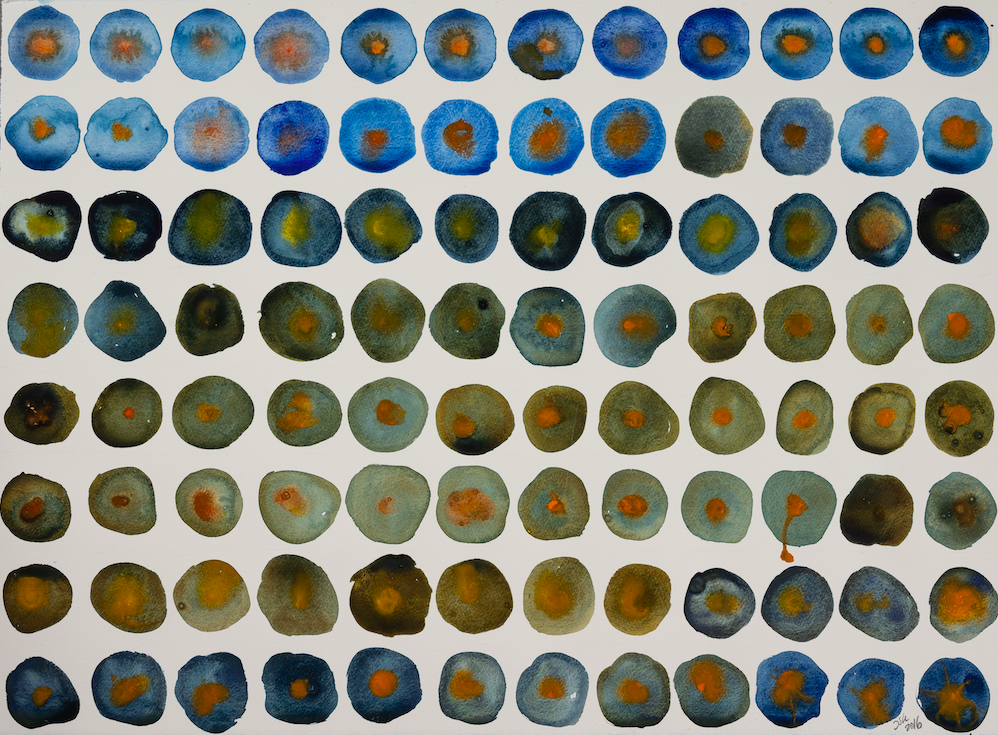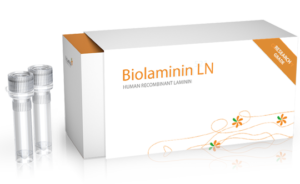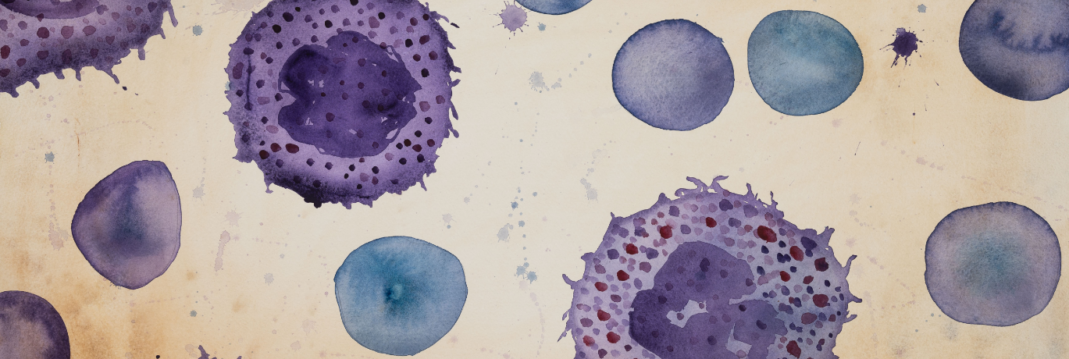Stem cells of animal origin

Biorelevant culture of animal stem cells on Biolaminin substrates
The laminin protein family is highly conserved
Laminins are a large family of conserved, multi-domain trimeric basement membrane proteins that contribute to the structure of the extracellular matrix and influence the behavior of associated cells. In the developing embryo, the alpha-1 and alpha-5 laminins are the first extracellular matrix proteins to be expressed. Laminin-111 is mostly expressed in extra-embryonic basement membranes and stimulates cells to commit to differentiation. Contrary, laminin-521, and laminin-511 are expressed around the stem cells in the inner cell mass and support survival and self-renewal of the pluripotent stem cells (Domogatskaya, 2012; Rodin, 2014a). The relative similarity of each pair of laminin chains within a chain constellation is conserved in most vertebrate species (Domogatskaya et al., 2012) and human recombinant laminins have been used for the defined and reliable cultures of many animal origin pluripotent stem cells, such as a mouse, rabbit, and monkey.
Culture of mouse pluripotent stem cells
In contrast to the inner cell mass of the human embryo where both laminin-521 and laminin-511 is expressed, the only laminin isoform expressed in the early mouse embryo is laminin-511. This data is nicely presented in an article published in Nature Cell Biology by the groups of Drs. Austin Smith and Jennifer Nichols where they also show that laminin-511 is crucial for the acquisition of naive pluripotency (Boroviak et al., 2014).
Since human recombinant laminin-511 provides the mouse pluripotent stem cells with their natural environment it supports the long-term expansion of mouse embryonic stem cells (Domogatskaya et al., 2008). Laminin-511 alone, without the addition of leukemia inhibitory factor (LIF) or other differentiation inhibitors, is sufficient to enable self-renewal of mouse embryonic stem cells (mESCs) for up to 169 days (31 passages) with a maintained expression of pluripotency markers. Cells cultured for 95 days (17 passages) on laminin-511 were used to successfully generate chimeric mice (Domogatskaya et al., 2008). This data is supported by a publication by Lecht and co-workers where they show that laminin is one of the major pro-adhesive ECM proteins for mESCs. The mESCs were found to adhere with the highest potencies to laminin-511 and laminin-521, most likely via specific binding to a3B1 and a6B1 integrin receptors expressed on the mES cell surface (Lecht et al., 2013).
Culture of monkey pluripotent stem cells
Laminin-521 and laminin-511 are two of the first extracellular proteins expressed during development. Both laminin isoforms are present in the inner cell mass of the human embryo and expressed by the pluripotent cells (Domogatskaya et al., 2012).
Human recombinant laminin-521 is a chemically defined and animal origin-free system for robust, long-term expansion of human pluripotent stem cells. Since it successfully replicates the specific human stem cell niche in vitro, it makes it the optimal matrix for efficient generation and robust large-scale expansion of human ES and iPS cells (Rodin et al. 2014). Several researchers are successfully routinely using laminin-521 for pluripotent expansion of monkey pluripotent stem cells.
Protocol:
Maintaining pluripotent mouse ES cells in vitro without the addition of leukemia inhibitory factor
WHAT OUR CUSTOMERS SAY
“BioLamina’s laminin-511 allows mouse ES cells to grow as a monolayer even on glass, which is suitable especially for live imaging.”
Dr. Yusuke Miyanari
IGBMC, France
Succeed with your application
-
Instructions 001: Coating with Biolaminin substrates
Protocol and concentration calculations for coating cultureware with Biolaminin
Open pdf -
Application note 002: Murine stem cell expansion on Biolaminin 511
Mouse stem cell culture on biorelevant matrix
Open pdf -
Laminin-511 but not -332, -111, or -411 enables mouse embryonic stem cell self-renewal in vitro
Domogatskaya A., Rodin S., Boutaud A., Tryggvason K. Stem Cells, 2008
Read more
Biolaminin Key Advantages
Mouse ES cells self-renew for over 5 months without the presence of LIF. Laminins enable highly efficient single-cell mESC derivation. Laminin-511 is crucial for the acquisition of naive pluripotency.
Mouse embryonic stem cells have 5-fold higher adherence to Biolaminin 511 than other matrices. This results in rapid cell expansion with minimal spontaneous differentiation.
Our products have consistent composition and quality. This enables minimized variability between experiments and uniform pluripotency gene expression profiles between different cell lines.
All our matrices are chemically defined and animal origin-free, which makes them ideal substrates for each level of the scientific process – from basic research to clinical applications.
Numerous scientists have found our products and finally succeeded in their specific stem cell application. The power of full-length laminins incorporated into various cell systems is well documented in scientific articles and clinical trials.
Recommended products

Biolaminin 511 LN (LN511)
Human recombinant laminin 511
Biolaminin 511 is the natural laminin for mouse embryonic stem cells and allows sustained pluripotency without the need to use feeder cells or differentiation inhibitors like LIF.View product
Biolaminin 521 LN (LN521)
Human recombinant laminin 521
Biolaminin 521 LN is the natural laminin for pluripotent stem cells and therefore reliably facilitates self-renewal of human ES and iPS cells in a chemically defined, feeder-free and animal origin-free stem cell culture system. LN521 is animal origin-free to the primary level.View product

Talk to our team for customized support
We are here to help you in your journey.